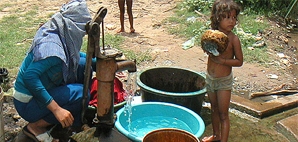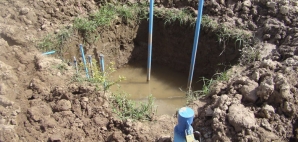Freshwater
Research Area block
More than one billion people lack safe drinking water, and freshwater is being depleted rapidly.

The Stanford Woods Institute is finding practical ways to meet growing demand for freshwater, both in developed and developing nations, including the use of recycled water and water resources. Stanford researchers are also looking at ways to protect groundwater, restore degraded waterways, improve water-use efficiency and reduce the impact of agriculture and other land uses on water systems.
Research Centers and Programs

Global Freshwater Initiative »
Building on water supply research conducted in India and Mexico, Global Freshwater Initiative researchers are developing strategies to promote the long-term viability of freshwater supplies for people and ecosystems threatened by climate change, shifts in land use, increasing population and decaying infrastructure.

Water in the West »
The western United States needs water systems that are sustainable from economic, ecological, political, institutional, equitable, scientific and legal points of view. The Water in the West program addresses multiple dimensions of realistic, integrated solutions to the region’s water challenges. The program’s current projects include sustainable groundwater, water and energy, watershed...

Water, Health & Development »
Working with partners in Asia, Africa and the Caribbean, Stanford researchers with the Program on Water, Health & Development are identifying ways to improve and increase the sustainability of water supply and sanitation service delivery, while also enhancing capacity for sustainable water and wastewater management in developing countries.
Other Research Centers and Programs
Environmental Venture Projects
Realizing Environmental Innovation Program
News & Press Releases

Mystery of Arsenic Release into Groundwater Solved »
Bacteria living in shallow sediment layers of permanently flooded wetlands in Asia drive arsenic release into water by feeding on freshly deposited plant material, a new study finds.
By Ker Than,
View More News & Press Releases
Media Coverage
Calif. Scrambles to Count Every Drop of Water »
Woods Co-Director and Senior Fellow Buzz Thompson discusses the possibility of bringing all water rights holders under the authority of the water board.
By Jeremy P. Jacobs,


